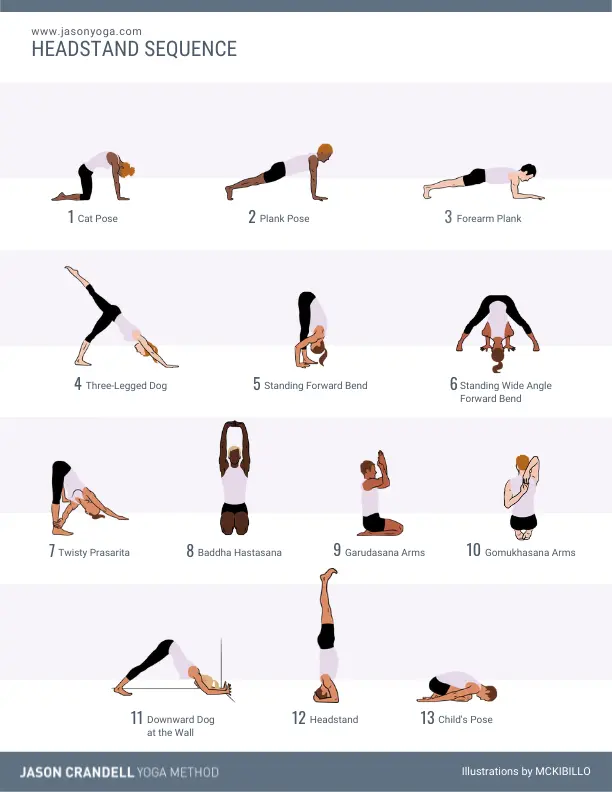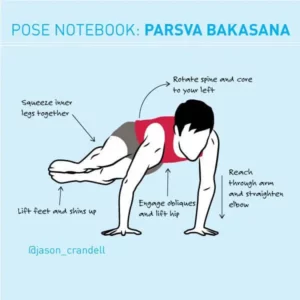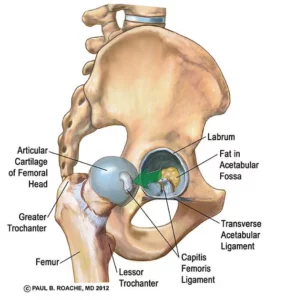WHY THIS YOGA HEADSTAND SEQUENCE WORKS
Let me start with a big caveat about this practice: This yoga headstand practice is NOT designed to teach you Headstand.
Rather, it’s designed to help you refine your Headstand by breaking down the elements that comprise good, skillful sequencing for the pose. It’s only intended for students and teachers who are already proficient in this posture. If you’re not regularly practicing yoga Headstand, please learn the pose in the presence of a qualified instructor. If you have never done Headstand, please don’t attempt it alone at home. Instead, you can choose to replace Headstand with Dolphin Pose in this sequence.
From a purely mechanical perspective, Headstand is a simple posture. Like all postures, Headstand contains plenty of nuances, especially with regards to the action of the shoulders and placement of the head. However in my experience, the most challenging aspect of the posture is becoming oriented upside down. Unlike deep backbends or forward bends, you don’t have to focus on a ton of strengthening or stretching to prepare for Headstand. Rather, you have to prepare your body, mind, and nervous system for the finer points of being aligned while you’re upside down.
Let’s break it down a little further:
Headstand Sequence
POSES 1-3
The sequence starts with Cat Pose in order to bring your awareness to your shoulders and upper back. It’s nice to release tension in this region and bring your focus to your shoulder blades when you’re preparing for Headstand. The sequence continues with Plank and Forearm Plank in order to engage your core. Core strength is not as important in Headstand as it is in Handstand and Forearm Balance (Pincha Mayurasana) since the posture is less mechanically stressful for your midsection. At the same time, it’s important to be mindful of the role that your core plays in keeping your pelvis, spine, and ribs vertically aligned in Headstand.
POSES 4 – 7
Poses 4 – 7 prepare you for Headstand by turning you upside down. Since Down Dog and the forward bends are slightly inverted postures, they can help you adjust to being upside down prior to Headstand. These four postures may also promote the focus and attention needed to tune into the finer points of Headstand.
POSES 8 – 11
You don’t need exceptionally flexible shoulders to do Headstand, but you do need to have a clear awareness of what your shoulders are doing in the posture. Postures 8 -11 are a progression of shoulder-opening postures that will mobilize your shoulder joints and help you focus your attention on your upper body. Baddha Hastasana, Gomukhasana, and Down Dog with your hands on the wall prepares your shoulders for the flexion that is required in Headstand. Garudasana complements these postures by preparing your shoulder blades for the protraction that is required in Headstand.
POSES 12 – 13
Most of the sequences I provide here conclude with the peak, or featured posture. I want to help students and teachers understand how to make challenging postures more accessible with smart, effective, and safe sequencing. Headstand is no exception, but the final posture in this sequence is Child’s Pose, not Headstand. It’s important to follow Headstand with Child’s Pose in order to help decompress the neck, relieve muscular tension there, and provide you with a few moments of stillness to savor the effects of the inversion.
{illustration by MCKIBILLO}
Want more sequences by Jason?
Sign up to join our newsletter and we’ll send you our e-book:
30 Essential Home Practice Sequences.



